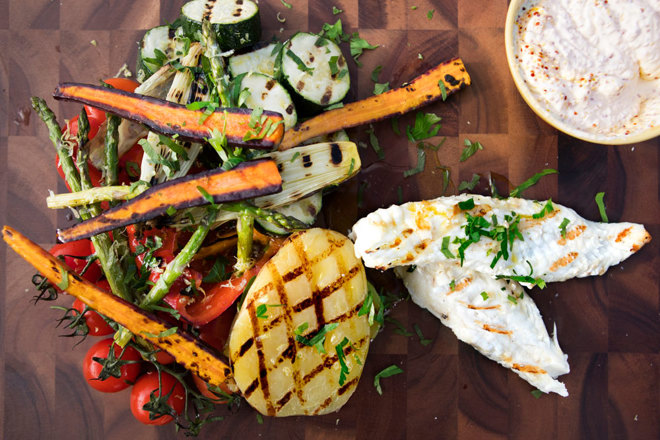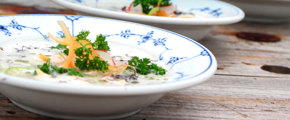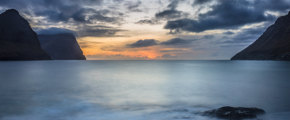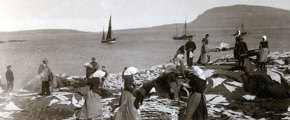Monkfish
There is no escaping the fact that the monkfish is a monstrous looking fish, with its large mouth, sharp teeth and spikey back. This has, however, not diminished the popularity of the fish. The flesh of the monkfish is firm yet tender with a mild taste, and it is often likened to lobster.
The monkfish has white, fatty, firm and dense meat. The head of the monkfish is quite large in proportion to the rest of its body and only the tail end and the cheeks are used for food.
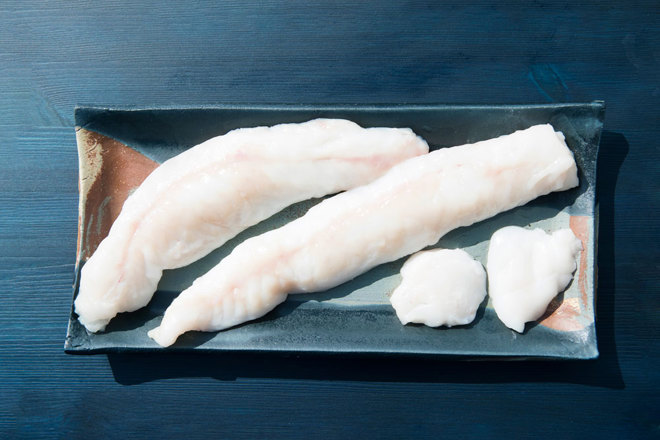
It is versatile and can be baked, broiled, grilled, fried, sautéed and poached with great results. There is a slightly sweet taste to monkfish, but it also has a mild taste of salt. It tastes of fish, without being overly “fishy”, which makes it agreeable to most.
Monkfish is often compared to lobster when it comes to cooking and is sometimes called the “poor man’s lobster”. They both have a similarly textured meat with the same mild salty and sweet taste, making monkfish a great, and often cheaper substitute to lobster.
Monkfish is rich in protein, vitamin A, vitamin B12 and selenium.
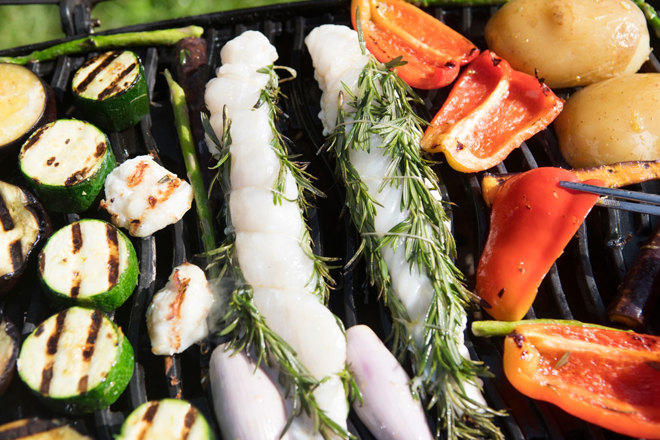
Biology
In the Faroe Islands monkfish is called Havtaska. The monkfish (Lophius piscatorius) can vary in colour but is mostly brown with a red hue or muted red spots. The underside is usually a grey-toned white.
Unlike other fish, monkfish are rather flat on the stomach, with a large rounded head and fan-like pectoral fins folded out to either side. There are two pelvic fins on the stomach and a dorsal fin close to the tail. Monkfish also have tiny spike-like scales all around their sides.
Monkfish have a disproportionately large head with a wide gaping mouth. All around the mouth opening there are sharp teeth of various sizes that bend in towards the throat. The bottom teeth are almost positioned in two separate rows.
Right above the mouth they have a long spike with a luminescent end, which they use to lure in other fish. They have another spike on the middle of the head and three closely spaced spikes towards the back. Monkfish can grow up to 200 cm in length, but this is very rare. They are usually around 35-120 cm when caught.
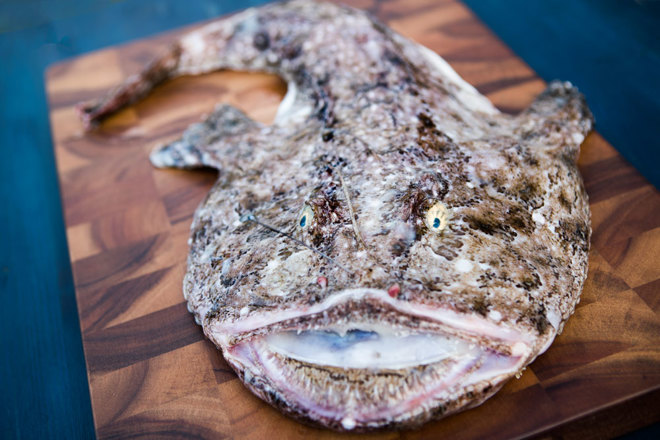
Monkfish do not seem to have a particular preference when it comes to habitat, as they can be found close to the shore, as well as out in open waters. They can live near the ocean surface and all the way down to a depth of 1800 metres.
Monkfish are spread quite widely across the North Atlantic ocean and can also be found all across the Mediterranean sea. They can be found from the bottom of the Mediterranean, all along the western coast of Europe, up to the Faroe Islands and Iceland and across to the Norwegian coast.
In the waters around the Faroe Islands, monkfish spawn from late winter and throughout spring. The fertilized eggs float on the ocean surface in a jell-like substance. Once the young are hatched they will float mid-water, drifting quite far. After 3-4 months, when they are about 5-12 cm long, they will settle on the bottom until they are mature.
Monkfish are very opportunistic eaters and will eat just about anything that crosses their path. The young monkfish eat mostly invertebrates, such as shrimp and the mature monkfish eat other fish.
The Faroese mainly fish for monkfish in the waters of the Faroe Islands. Faroese vessels use trawls, longlines and nets to fish for monkfish.

